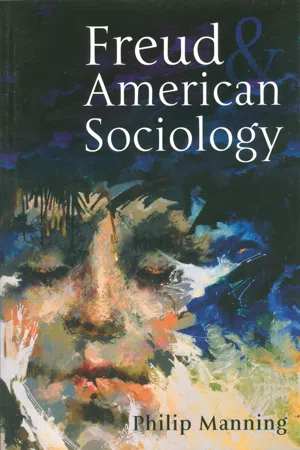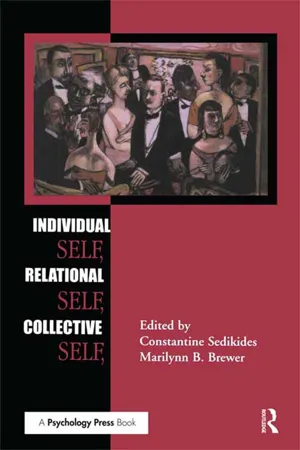Social Sciences
Charles Cooley
Charles Cooley was an American sociologist known for his concept of the "looking-glass self," which suggests that our self-concept is shaped by how we believe others perceive us. He also contributed to the development of symbolic interactionism, emphasizing the importance of social interaction and communication in shaping individual identity and behavior. Cooley's work has had a lasting impact on the field of sociology.
Written by Perlego with AI-assistance
Related key terms
2 Key excerpts on "Charles Cooley"
- eBook - ePub
- Philip Manning(Author)
- 2013(Publication Date)
- Polity(Publisher)
2From Sumnerology to Cooley’s Social Self: Proto-Symbolic Interactionism
IntroductionThe ideas of both William Graham Sumner (1840–1910) and Charles Horton Cooley (1864–1929) continue to exist for us today, but they do so for the most part only as echoes. It is not easy to establish the moment when they ceased to be the authors of books and became the owners of key concepts, but it has certainly occurred. Perhaps Sumner was still read until World War II. Writing in 1968, Philip Rieff noted that Cooley had been lost to his generation, whose faith in its own “radical contemporaneity” made Cooley appear hopelessly “out of date.” He was in danger of becoming the latest recruit in the army of the “distinguished but ignored” – along with Albion Small and others (in Rieff, 1990: 310–11). Sumner is now remembered as the sociologist who distinguished folkways, mores, and taboos; Cooley is the person who coined the terms “primary group” and “looking glass self.” The downward mobility implied by this transformation makes it hard for us to recognize now the excitement once generated by their books. In fact, there is a double problem: to recognize their importance then and to realize that they can still speak to us now.I want to propose that despite their many differences – political and temperamental, among others – at least aspects of the work of Sumner and Cooley outlined a viable sociological social psychology. Thus, although Sumner and Cooley were antithetical political figures, they were nevertheless convergent sociological theorists. However, it was a strange convergence. To use part of Sumner’s own vocabulary, although Cooley was an absentee in-group member of Chicago sociology, Sumner was definitely part of the out-group, an outcast, a pariah whose perceived pro-business, laissez-faire politics was completely out of step with the Progressivism favored by Cooley, Ward, Ross, Small, and most of the sociologists in the United States at the beginning of the twentieth century. Dorothy Ross has characterized this political impasse very well: - Constantine Sedikides, Marilynn B. Brewer(Authors)
- 2015(Publication Date)
- Psychology Press(Publisher)
Clearly, there are some important points of departure between self-categorization theory and social cognitive approaches. In many respects, self-categorization theory has more in common with the orientation or flavor of the early self theories than with the currently popular “self as schema” metaphor. The early self theorists took it for granted that the self is social and relational, in the sense that the self cannot exist apart from the other. Personality, like the self, was believed to have an intrinsically social basis (e.g., see Baldwin, 1871/1902, p. 27; Mead, 1934, p. 162). They rejected the view that the self is a stored entity, a preexisting thing or given (e.g., see W. James, 1892/1948, p. 69; Mead, 1934, p. 182). On the contrary, selves did not exist independently of the social processes in which they are involved. Furthermore, the collective aspect of social life was considered a precursor to the emergence of a personal self (see Cooley and Mead in particular). Those writing at the turn of the century thus theorized about the social processes that constituted the self, rather than nonsocial, intrapsychic mechanisms. They argued that the collectivity played a role in all social life, such that even one’s most private innermost thoughts were highly social: “The mind is not a hermit’s cell. … The life of the mind is essentially a life of intercourse” (Cooley, 1902/1922, p. 97). They advocated that social comparison is critical to self-definition, and understood that things can be compared only insofar as they are already similar at some higher plane. In particular, Cooley accepted the idea that differentiation at one level depended on identification at a higher level. The early theorists entertained the possibility that the circumference of the socius can expand to include other persons (e.g., see Baldwin, 1897/1902, pp. 38–39; Cooley, 1902/1922, pp. 209–210). Moreover, they maintained that the social group—real or inferred—serves to sustain the self; it provides the individual with a consistent way of thinking about oneself and, thus, a sense of unity (e.g., see Mead, 1934, pp. 144, 154; see also Scheibe, 1995, p. 38).As well as the similarities between the classical view and self-categorization theory, it also is important to note the differences (Turner & Onorato, 1999). The former defines the social self primarily as a “looking glass” self, a public self presented to others in social interaction and comprising the reflected appraisals of others. This self is still largely a social “me,” a personal self reflected in the reactions of others rather than a social identity in the sense of a self shared with others and including others. In self-categorization theory, the social self may be publicly presented, but it also is a private, psychological self cognitively represented in the form of self-categories, a self which exists subjectively for and from the vantage point of the perceiver. Moreover, the self is not predominantly or basically personal, but exists at different levels, including a collective level of social identity which extends beyond the individual perceiver to include and define as self other people who are not the individual perceiver. Influence from these “others” is ac-cepted precisely because they are not “others,” but “self,” members of a self-defining social category. They are “we” and “us,” not “you” or “them.” The influence process is not strictly one of reflected appraisal. The others who influence are not a looking glass which reflects self. They are authentically self and their views express “our” views, the views of our collectivity. When shared in-group membership is salient, in-group members participate in and express a collective self, not a looking glass self, and these are not the same. The collective self is not the personal self perceived by some external collectivity (as Triandis, 1989, argued). It is a shared social identity that includes one class of people and excludes other kinds (as an act of self-categorization by the perceiver, not as a reflection of the public personal self).
Learn about this page
Index pages curate the most relevant extracts from our library of academic textbooks. They’ve been created using an in-house natural language model (NLM), each adding context and meaning to key research topics.

